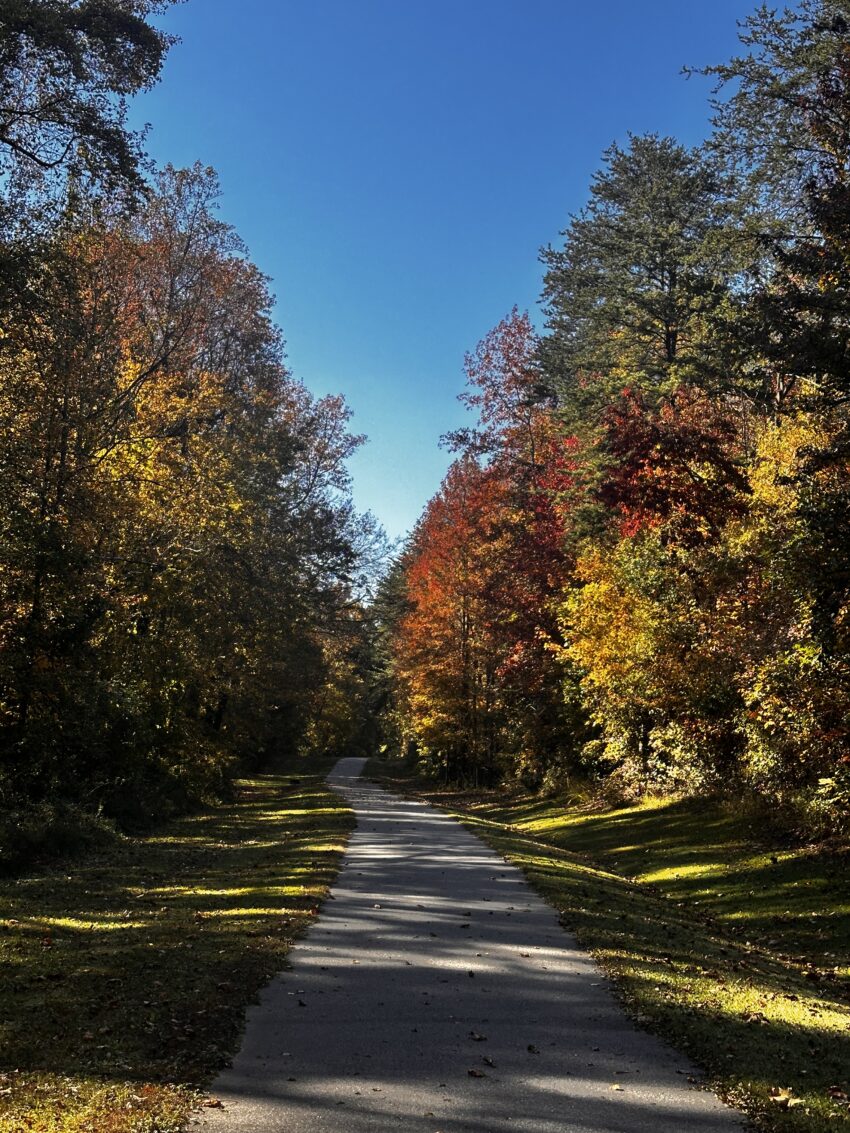Training For A Charity Hike

Charity hikes have become a beacon of hope and change, blending personal goals with community impact. Many folks are lacing up their boots to tackle trails not just for adventure, but for a cause close to their hearts.
These hikes aren’t just physical challenges; they’re often lifelines for the programs they support. Whether it’s raising funds for medical research, educational causes, or environmental conservation, charity hikes bring awareness and resources where they’re needed most.
Hearing stories from past participants can be downright inspiring! Take Susan, who conquered the Appalachian Trail for breast cancer research after losing her mom to the disease. The journey was as much about raising funds as it was about healing and finding peace along the way.
Joining a charity hike means you’re becoming part of something bigger than just the miles you’re covering. It’s about community—both the one you’ll physically walk through and the one you’ll impact from afar. Plus, the camaraderie and stories shared along the trail can be incredibly enriching.
Every step taken on these trails is a step toward making tangible changes. Remember, it’s not just about the finish line; it’s about the journey and the purpose that fuels each stride. So gear up, because this is one adventure where your footprints leave a legacy.
Assessing Your Fitness Level
Before hitting the trail, it’s crucial to gauge where you stand fitness-wise. This isn’t about being an athlete; it’s about understanding your current abilities to plan effectively.
Start by taking a good look at your everyday activities. If you’re already active, awesome! This gives you a leg up on your training journey. Maybe you hit the gym a couple of times a week, or perhaps cycling is your thing. Whatever it is, it all counts.
On the flip side, if your regular exercise is more sporadic, that’s totally okay too. Everyone starts somewhere, and the important part is recognizing where that starting point is.
Try some basic fitness tests to get a clearer picture—maybe a three-mile walk at a comfortable pace or a light jog in your neighborhood. Pay attention to how you feel during and after. Are you struggling, or does it feel like a breeze?
Fitness apps and smartwatches can be super helpful here. They can track your performance, giving you a tangible sense of your progress over time.
Remember, this isn’t about judgment; it’s about creating a personalized roadmap to get you ready. Knowing where you are now helps you build a plan that’s realistic and motivating. Let’s get those hiking boots ready for the journey ahead!
Developing a Comprehensive Training Plan
Crafting a solid training plan is like laying down a roadmap for success. You’re not just prepping your legs; you’re gearing up your whole self for the adventure ahead.
Start by penciling in a balanced mix of activities. Walking or hiking regularly is a no-brainer, but don’t forget to shake things up. Strength training is key, especially for your legs, core, and back. These muscles help you carry that backpack with confidence.
Cardio exercises, like biking or a chill jog, are fantastic for boosting endurance. Your heart’s got to keep up with those thrilling miles! Plus, flexing those flexibility muscles with some stretching or yoga can keep you limber and cushioned from injuries.
Be smart about your schedule. Keep it realistic, fitting it around your daily life, not the other way around. It’s about consistency, not overloading. Gradually increase the intensity; your future self will thank you when you’re breezing through those trails.
Goal-setting is your best friend here. Break down big ambitions into weekly milestones. Whether it’s bumping up your walk time or adding more weight to your squats, each step is progress.
A well-rounded plan sets you up for more than just completing a hike—it prepares you physically and mentally for what’s to come. It’s like building a house; you need a strong foundation to support everything that follows.
The Importance of Gradually Increasing Intensity
When it comes to hiking, jumping into the deep end isn’t the best approach. Think of it more like a staircase, not a leap of faith. Slowly ramping up your hiking intensity helps build endurance and strength without burning out.
Begin with manageable distances that feel comfortable to you and step up by around 10% each week. This gentle progression allows your body to adapt, reducing the risk of injuries like shin splints or knee strain.
Mixing in elevation changes is another smart move. If you’re prepping for a hike with notable ups and downs, practice on hills or staircases to simulate that terrain. Your muscles will thank you for the heads-up!
Remember, everyone’s timeline is different. Listen to your body’s signals, both triumphs and twinges. Occasionally, rest will be your secret weapon in gaining stamina and strength, allowing those muscles to recover and grow.
Tracking your hikes with an app or even jotting notes after each outing can help you see how far you’ve come. Small wins are crucial. They’ll boost your confidence and keep your spirits high as you progress towards your main event.
Building intensity isn’t just about sheer distance or incline. It’s about creating a rhythm that your body can maintain comfortably and confidently. With time, those trails that once seemed daunting will feel like familiar territory.
Why Practicing with Gear Matters
Training with your gear might sound like a small detail, but it’s a game-changer for hiking comfort and safety. Think of it as your dress rehearsal before the big day.
Start by getting acquainted with your backpack. Load it up with the essentials, ensuring the weight is similar to what you’ll carry on your charity hike. This helps both your body and mind adjust to the added load.
Your feet will take hundreds of steps on uneven terrain, so breaking in your hiking boots is crucial. Wear them during shorter training hikes or even around the house. This can prevent painful blisters and give you a feel for any tweaks needed, like extra cushioning or different lacing techniques.
Clothing matters too. Tech fabrics that wick moisture and dry quickly can make a huge difference in comfort, especially on lengthy hikes. Experiment with layers to find the best combination for different weather scenarios you might face.
Practicing with your gear isn’t just about the physical aspects; it’s about building familiarity and confidence. Knowing how your gear feels and functions means fewer surprises on the trail, allowing you to focus on the hike itself and the cause you’re supporting.
Fueling the Body: Nutrition and Hydration Basics
What you eat and drink plays a huge role in how you perform on the trail. Keeping your energy levels steady and staying hydrated can make or break your hike.
Let’s start with water, your essential hiking buddy. On your training hikes, practice sipping water regularly to find the right rhythm for you. Too much, too quick can lead to discomfort, while too little might leave you drained. It’s about finding that sweet spot.
As for snacks, it’s all about quick energy boosts. Carry a mix of goodies like energy bars, nuts, or dried fruit in your pack. Different foods work for different people, so try them out before the big day to see what sits well with you.
If you’re tackling longer hikes, consider packing a more substantial bite like a sandwich or wrap. Your body will thank you for the refuel session when you’re a couple of hours in and need that second wind.
Getting your nutrition and hydration right during training helps prevent fatigue and prepares you for the rigors of your charity hike. Your body is fueling a double-duty effort, supporting both the physical trek and the cause at hand.
Mental Preparation for Success
Your body might be ready for the hike, but don’t underestimate the power of your mind in this journey. Mental stamina is key when faced with long trails, unpredictable weather, or just sheer fatigue.
Visualization can be a powerful tool. Picture yourself pacing up those hills and reaching that finish line. This mental dress rehearsal helps build confidence and reduces pre-hike jitters.
Consider incorporating some mindfulness or meditation into your routine. Even a few minutes a day can help clear your mind and focus your intentions. This practice is great for calming any anxieties that might arise while hiking unfamiliar or challenging trails.
Positive affirmations are another handy trick. Keep a couple of motivational phrases in your back pocket to remind yourself why you’re on this journey and what you hope to achieve. These can be your lifeline when the going gets tough.
Remember, it’s not just about being physically fit; being mentally prepared can turn what might feel like a daunting task into a fulfilling adventure. Knowing you can push through the mental barriers is just as important as tackling physical ones.
Creating a Supportive Community
Going on long hikes doesn’t have to be a solo adventure. Joining a hiking group can offer motivation, shared knowledge, and a whole lot of fun.
A buddy or a group of fellow hikers can make all the difference. Having someone to share the journey with can provide that extra push on days when your motivation might dip.
Look for local hiking clubs or groups on social media platforms. Many charity hikes also have online communities that you can join. Connect with others who are preparing for the same event or who have completed similar hikes.
Beyond company and cheerleading, hiking with a group means access to shared experience. Long-time hikers can offer tips on everything from tackling tough terrain to finding the best energy snacks.
Training with others also helps with accountability. When you’ve got folks counting on you to show up, it gives you that extra nudge to stick to your plan. Plus, it makes the training process a whole lot more enjoyable.
Think of your hiking companions as an extended support system. Sharing experiences and encouragement not only helps you prepare for the challenge but also enriches the overall journey. Without a doubt, these connections can be one of the most rewarding parts of the hiking adventure.
Logistics, Fundraising, and Final Preparations
Nailing down the logistics of your charity hike ensures you’re going in prepared and stress-free. Familiarize yourself with the route by studying maps or trail guides. Know the distance, elevation changes, and any specific challenges you might face along the way.
Don’t leave the essentials to chance. Make a checklist of everything you need, from permits and emergency info to packing essentials like a first-aid kit and trail snacks. Check the weather forecast to prep your gear accordingly and pack a bit extra for those unexpected turns.
Fundraising for your cause is just as important as the hike itself. Share your journey with friends and family—excite them with stories, milestones, and what the hike means to you. Use social media to reach a wider audience and engage people through updates and photos from your training.
As the hike date approaches, stay flexible with your training. Life happens, and it’s okay to change up your routine, as long as you remain committed to your goal. Take the time to reflect on why you’re doing this hike to keep your motivation high.
Final preparations go beyond packing your bag and reviewing the route. It’s about preparing mentally and physically for the experience, knowing you’ve put in the hard work and are ready to make a positive impact. With your dedication, you’ll not only complete the hike but also further a cause that matters to you.


Leave a Reply